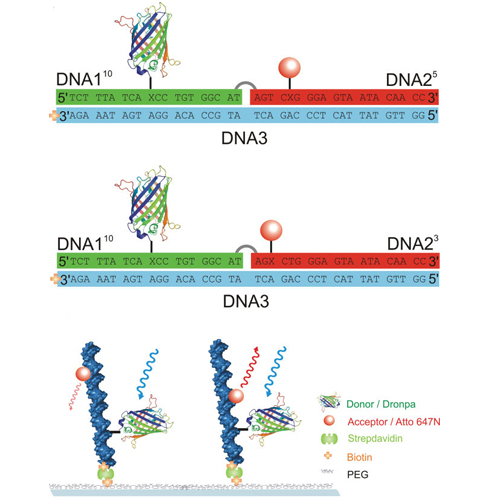Single-Molecule Investigations of a Photoswitchable Nanodevice
04-Mar-2009
Small, 2009, DOI: 10.1002/smll.200801549, Volume 5, Issue 10, pages 1169–1175, published on 04.03.2009
Small, online article
Due to the specificity of Watson–Crick base pairing, DNA is an excellent molecule for the fabrication of nanostructures. It has been shown that DNA can be used as a scaffold for positioning proteins and synthetic molecules with nanometer accuracy. As the next step in adding complexity and functionality to these nanodevices, optical addressability is incorporated. The fluorescent protein Dronpa, which can be optically switched between a fluorescent state and a dark state, is mounted on a DNA scaffold in the proximity of a synthetic fluorophore. Hence, the system can be optically switched between the dark state and an optically active state that undergoes Förster resonance energy transfer. As nanodevices operate as individual units, the functionality of the device is analyzed using single-molecule microscopy. The physical characteristics of nanodevices make them well suited as probes for investigating cellular processes or as shuttles for gene therapy. Hence, the functionality of the nanodevice is verified in the context of cellular measurements.











